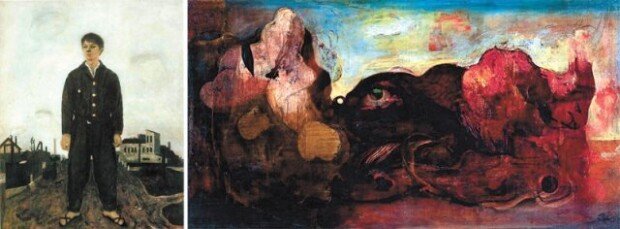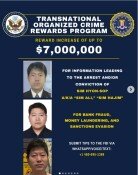Implications presented by artworks from more than 100 years ago
Implications presented by artworks from more than 100 years ago
Posted May. 21, 2022 07:33,
Updated May. 21, 2022 07:33


Japanese modern painter Nakamura Tsune (1887-1924) lived a life close to death. He was left on his own at the age of 20 as he lost his family one after another in his childhood. His parents died of illness and his oldest brother died fighting in the Russo-Japanese War, and his second oldest brother died of accident. Tuberculosis, which spread around the world, plagued him for the rest of his life. One year before dying at the age of 37 from tuberculosis, he painted his famous work, “Self-portrait with a Skull (1923).” A man is holding a skull with no signs of resistance or anger, with his cheeks flushed with a mild fever. The man, who is waiting patiently for death, was Nakamura himself.
The author, who wrote, “My Pilgrimage to Western Art” and “My Pilgrimage to Joseon Art,” paid attention to modern art of Japan, the country he was born and raised in. The seven painters introduced in the book, including Nakamura Tsune and Sekine Shoji (1899-1919), were active between 1920 and 1945. During that time, many people lost their lives due to Spanish flu and tuberculosis, and Japan entered World War ll after waging the Sino-Japanese War and the Pacific War. This book introduces the seven painters, who fought for the universal value of beauty when many painters agonized between life and death, and considered themselves as the puppet of political propaganda in the middle of war.
The theme transcending the book is death. Just like Tsune painted a self-portrait holding a skull one year before his death, modern painters, who died young from diseases, had a premonition of death and reflected it in their works. Sekine, who died of tuberculosis and Spanish flu at the age of 20, probed deeply into the meaning of death since he was a teenager.
There are also painters, who stayed conscious while protesting against the trend of the times, where many artists painted works that raised the spirit of war. The case in point is Aimitsu (1907-1946). In 1938, shortly before Japan waged a war of aggression by enacting the National Mobilization Law, Aimitsu painted “Landscape with an Eye,” which depicts an eyeball looking straight ahead. The painter explained that the giant, red eye staring straight ahead in the middle of the wilderness suggests what is about to come.
The COVID-19 pandemic has lasted for more than two years and Russia has invaded Ukraine, killing and injuring innocent civilians. The background of the book, 1920-1945, was an era that dark clouds, such as Spanish flu, tuberculosis, and World War, hovered all over the world. Because that era is so similar to the present plagued with infectious diseases, war and violence, the implications presented by the artworks from more than 100 years ago feel closer to home.
Jae-Hee Kim jetti@donga.com




![[오늘과 내일/우경임]교육부 장관인가, 교사부 장관인가](https://dimg.donga.com/c/138/175/90/1/wps/NEWS/IMAGE/2025/12/26/133045801.1.png)


